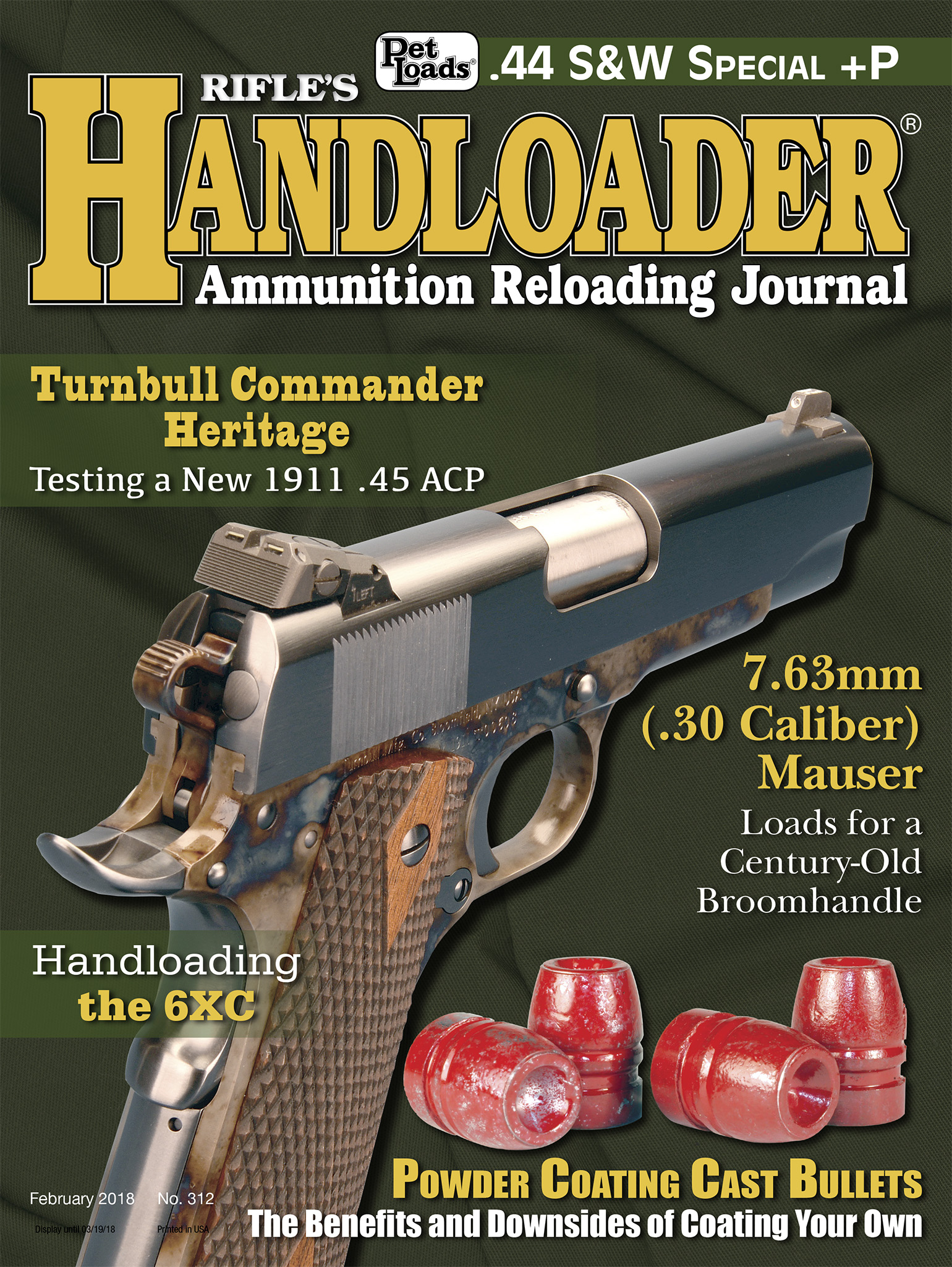Cartridge Board
.35 S&W Auto
column By: Gil Sengel | February, 18
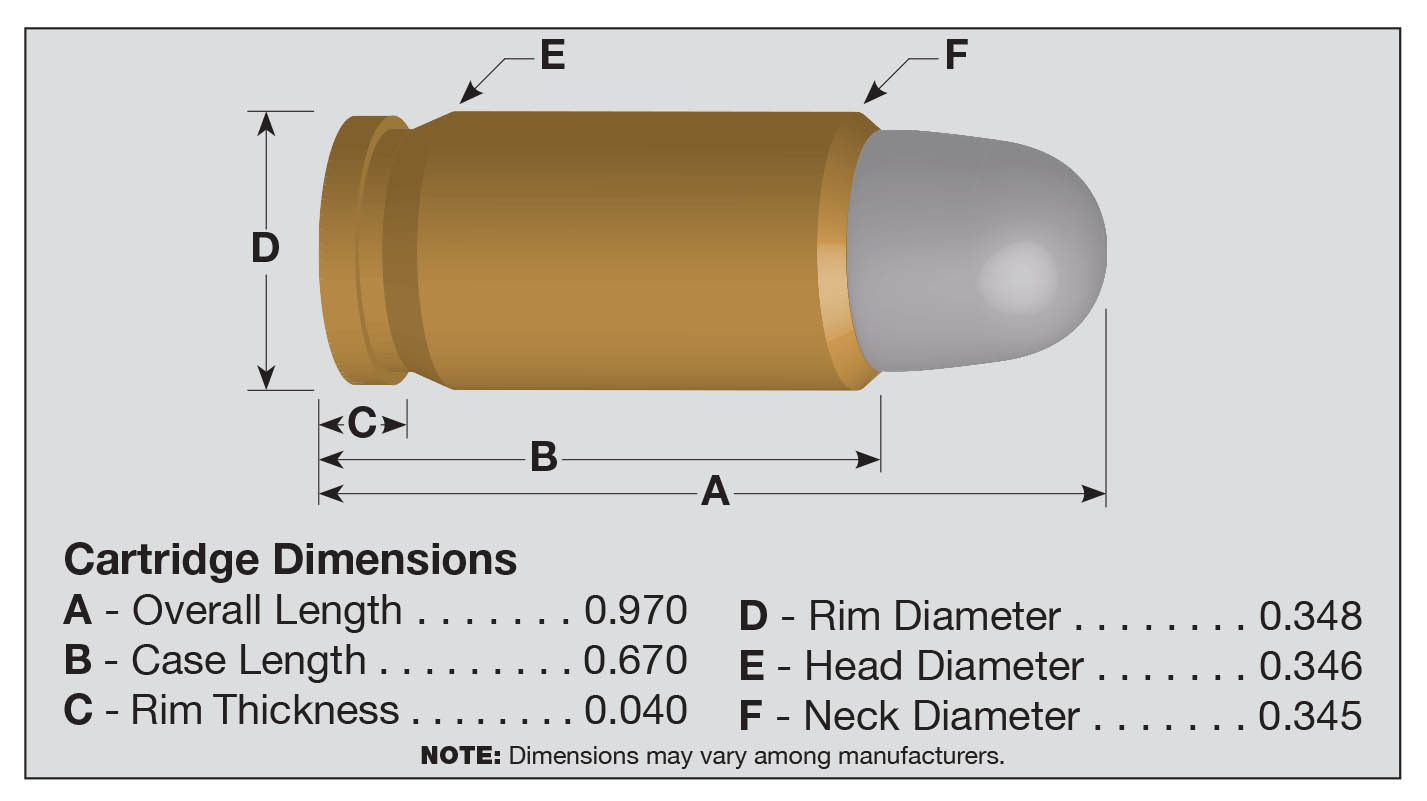
Handgun cartridges have suffered as well. All calibers from .32 to .45 have examples that differ only by a few thousandths of an inch. Some were even considered new because bullet shape was a bit different than an existing round! This leads us to our subject cartridge, the .35 S&W Auto, one of the more bizarre stories in the annals of cartridge history.
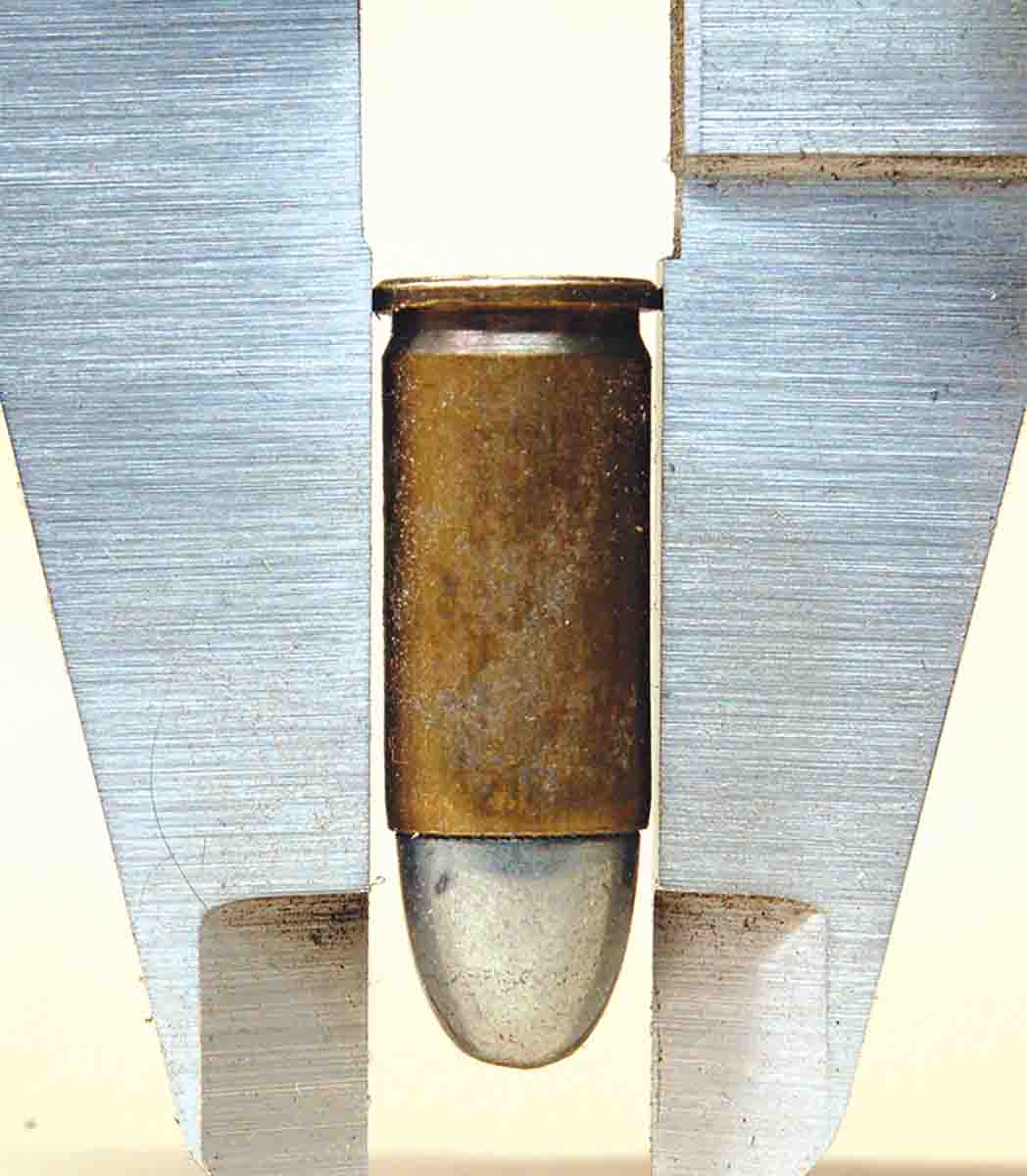
It was quickly discovered that pockets contained all manner of dirt and grit, to say nothing of what might exist in purses. This debris had a way of getting between cylinder and frame or into the open ends of the exposed chambers. This retarded or prevented cylinder rotation when attempting to fire the gun. Not good.
Clean-burning characteristics of smokeless powder, however, had made possible the simple blowback (nonlocked breech) autoloading pistol. By the first few years of the twentieth century these guns were being made and sold in Europe by Fabrique Nationale (FN). Their cartridge was called the 7.65mm Browning, because John Browning had designed the gun and this was the round he used in it. Colt began selling a small, concealed-hammer pocket pistol (also a Browning design) in 1903. It fired the same cartridge as the FN pistol, only in the U.S. it was known as the .32 Automatic Colt Pistol (ACP).
Smith & Wesson was watching this closely. In 1910 the company purchased rights to manufacture a pistol designed by Charles Clement. It was then being sold in Europe and fired the 7.65mm Browning cartridge. Smith & Wesson now had a pistol, but no cartridge! The company didn’t want to stamp “7.65mm Browning” on its pistol since Browning was designing autoloaders for Colt. Just plain metric “7.65mm” would leave 99 percent of U.S. customers having not the faintest idea what that meant. Marking it with Colt’s name, “.32 ACP,” was also out of the question. What to do? Smith & Wesson created a new cartridge of course.
First the body diameter of the 7.65mm/.32 ACP was increased a bit – just enough so loaded rounds would not fit in a .32 ACP
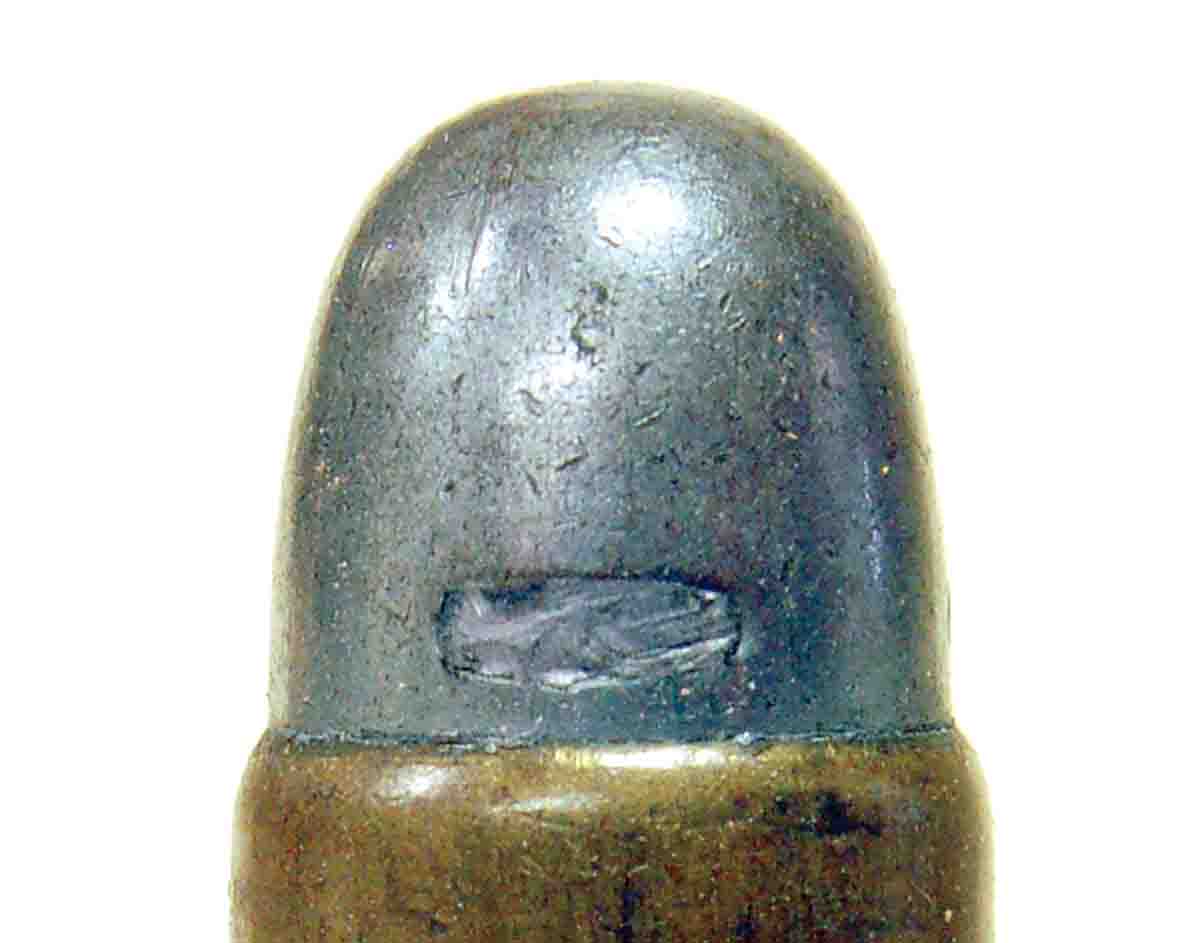
Without going into more detail than necessary, it should be said that all cartridge cases have rims. Some protrude well beyond the case body (rimmed .44 Magnum), some protrude only a tiny amount (semi-rimmed .32 ACP) and some not at all (rimless .45 ACP). Apparently someone involved in the creation of the 7.65mm cartridge thought the small bullet diameter did not give enough case mouth on which to headspace. A tiny rim was added that would not materially interfere with feeding from a box magazine. Smith & Wesson obviously disagreed, but then the walls of its case were about .005 inch thicker.
The new round was called the .35 S&W Auto. From this one might think it was of .35 caliber, but it was not. Bullet diameter is the same as the .32 ACP – which is not a .32 caliber either! Confused? So are the folks who write about such things.
Early jacketed bullet diameter for the .32 ACP was roughly between .308 and .309 inch. References state its the same for the .35 S&W, a fact supported by measurements taken from samples in my collection. Bore diameter of .32 ACPs is about .301 inch and would have to be the same or nearly so for the .35 S&W. Also, all those references stating that the metric designation of the .32 ACP (7.65mm) indicate bullet diameter is just wrong. Converted to something useful, 7.65mm equals .301 inch, the bore diameter, or caliber. One reference even states that “35” was put in the Smith & Wesson cartridge’s name “to avoid confusion.”
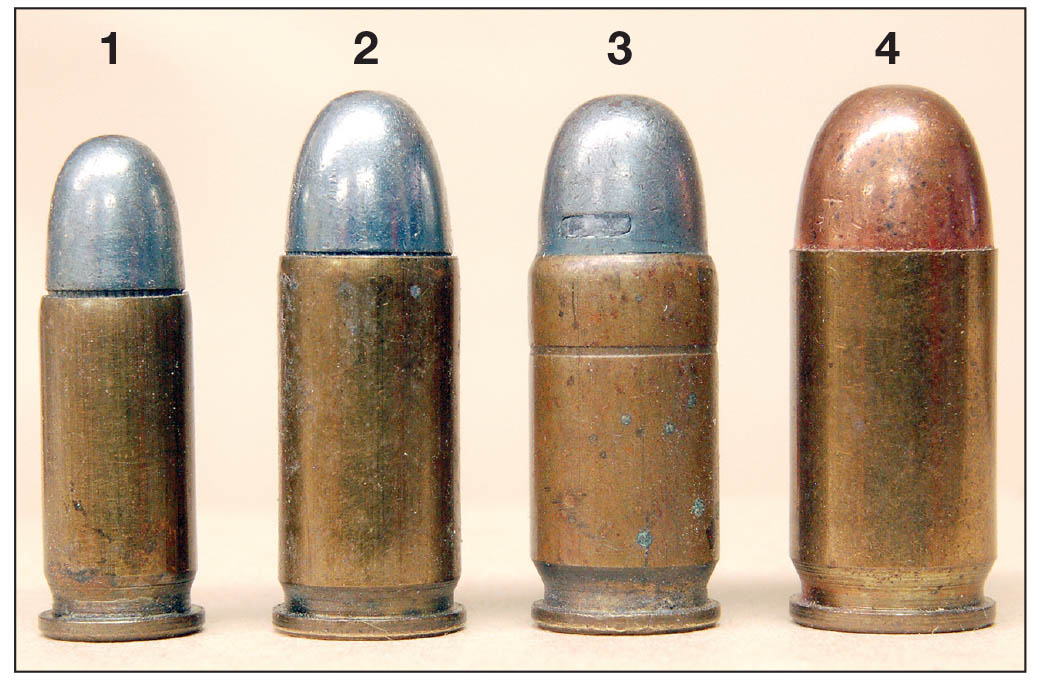
The cartridge and pistol firing it were announced in early 1913. Sales were slow because the gun was awkward to handle and the safety on the backstrap was difficult to operate. Production ceased in 1921. Ammunition was always hard to find due to so few guns having been sold (8,350), higher cost due to bullet construction, and owners quickly discovered that .32 ACP rounds could be fired instead. Empties would have been bulged, but since autos throw fired cases into the “great beyond,” never to be seen again, it’s certain no one cared.
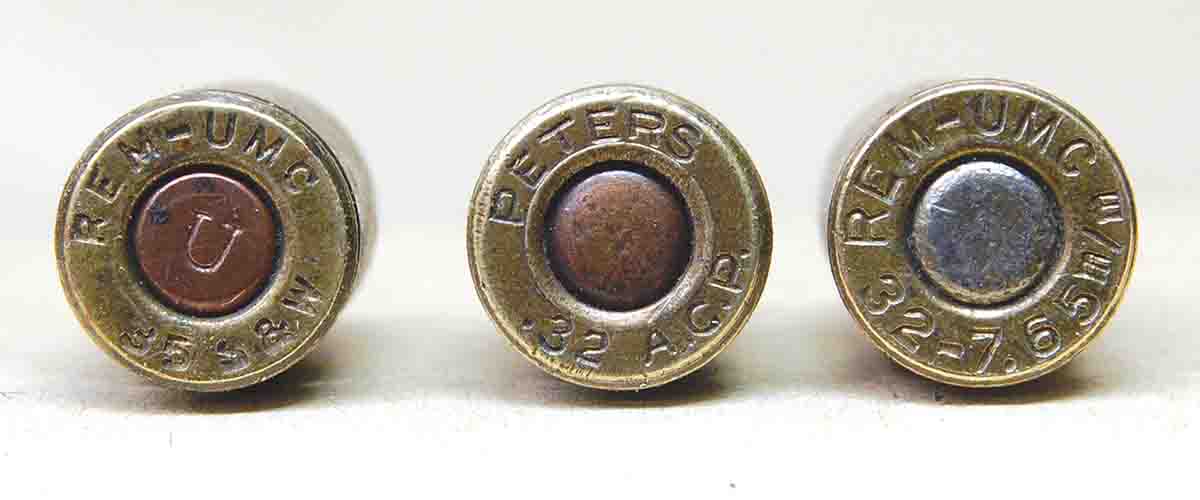
Winchester, Remington-UMC and Peters loaded .35 S&W ammunition. Winchester listed both a full jacket and softpoint bullet until 1928, when the latter was dropped. Full jacket rounds were listed into the mid-1930s. Remington offered the same two bullet styles and Peters the full jacket only. Strangely, Remington bullets exist both with and without the anchoring slits in bullet noses. Peters rounds use the slits, however none of the Winchester cartridges in my collection have them. It’s just a guess, but probably once Smith & Wesson dropped the pistol all the ammunition companies began loading their standard .32 ACP bullet in the cartridge until it was discontinued prior to WWII. Smith & Wesson tried redesigning its pistol somewhat and chambered it for the .32 ACP. It was offered starting in 1924, but only 957 guns were sold before being dropped in 1936. The reason stated was its high cost compared to the competition. The company then got out of the semiautomatic, centerfire market and did not return until the late 1950s.
Looking back, we can easily see that the .35 S&W Auto and pistol that fired it served no new purpose, were quickly gone and are now collector’s items. Sound like any “new” cartridges we know today?


